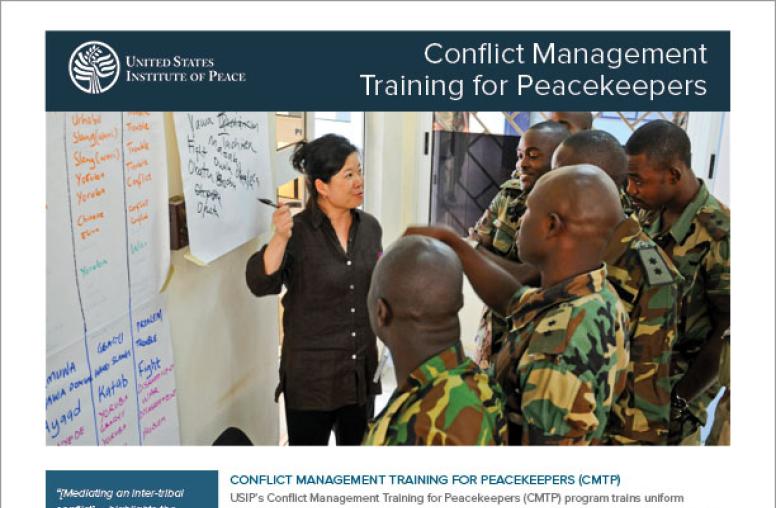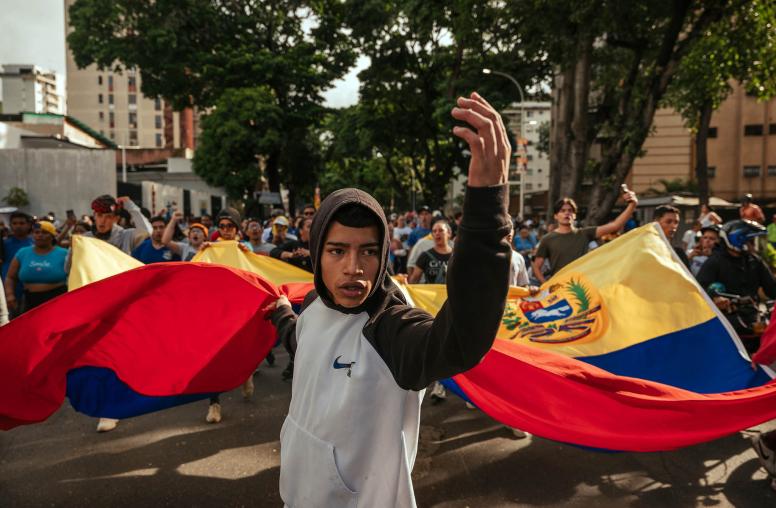Many colleagues and acquaintances of the late Secretary of State George P. Shultz will remember his tendency to equate diplomacy with gardening. To Shultz, the diplomat should devote unwavering attention to his “plants”—that is, the day-to-day work of diplomacy, which requires long-term planning, the steady and diligent tending of relatively unchanging interests, and the cultivation and maintenance of alliances.

Having had the privilege to work closely with Secretary Shultz for two years as one of his speechwriters and Middle East advisers, I saw firsthand his wisdom, strategic vision and knack for tactical brilliance. His diplomatic garden could appear unchanged for extensive periods only to bloom dramatically under his creative diplomatic flair and instinct.
I participated actively in one such breakthrough: the December 1988 initiation of the U.S.-Palestine Liberation Organization (PLO) dialogue. For more than a decade, the United States had refused to engage the PLO until it met three conditions: renunciation of terrorism, recognition of Israel’s right to exist, and acceptance of U.N. Security Council Resolution 242 (1967)—which referred to the right of all states in the Middle East to live in peace and security—and Security Council Resolution 338 (1973), which called for negotiations as the basis for peace making.
Earlier that year, Shultz had put forward a peace initiative in response to the first Palestinian Intifada, but the effort went nowhere. By mid-1988, the peace process was stalled and exhausted. Jordan’s King Hussein had renounced his claim to the West Bank in frustration; PLO Chairman Yasser Arafat in Tunis seemed more concerned about rival leadership emerging in the occupied territories than in improving the lot of his people; and Israeli Prime Minister Yitzhak Shamir had demonstrated little interest in taking steps toward peace.
Taking Big Risks for Diplomacy
In late summer of 1988, two green shoots promised to revive the withering Middle East peace landscape. Swedish Foreign Minister Sten Andersson approached Shultz to ask whether the United States would object to an effort to secure Arafat’s acceptance of the three conditions for dialogue. Simultaneously, a small group of Americans—Jews and Arabs—had adopted the same goal. Intermittently, the group called Assistant Secretary for the Near East Richard Murphy and me to relay their conversations with Arafat, and to discuss whether they were heading in the right direction.
In both cases, Shultz gave enough latitude for both unconventional efforts to take root. This was a very risky undertaking for a secretary of state, especially in the run-up to a presidential election. The PLO was widely seen as a terrorist organization and encouraging processes designed to start U.S. engagement with Arafat was bound to be unpopular with our close ally Israel and among many in the policy community at home. Nevertheless, Shultz proved willing to take that risk and to use the Swedes and the American group to the advantage of U.S. policy.
Shultz understood the strategic value, art, and need to navigate both the politics and policy inherent in any act of diplomacy. While he was willing to explore new pathways, he insisted there be no cutting corners: If Arafat decided to accept the three conditions for dialogue, it would need to be unambiguous.
He also demonstrated that the United States would do nothing to make Arafat’s choice any easier by denying the PLO leader’s request for a visa to speak before the U.N. General Assembly in New York, causing the session to be moved to Geneva. For Shultz, for this gambit to yield any progress would require demonstrating to both Arafat and the American people the administration’s determination to hold the PLO’s feet to the fire. Even so, the process nearly collapsed. Arafat delivered a speech that fell far short of the language we had made clear we needed to hear.

Shultz declined to budge but also did not simply quit. He rejected the advice of some advisers to accept what Arafat had said and rejected the advice of others to throw in the towel. His message to Arafat was clear: If the PLO wanted a dialogue with the United States, no games would be tolerated, and it would be on terms consistent with longstanding U.S. policy. Within a week, the PLO chairman reversed course and embraced the words we had required and drafted. In response, Shultz announced that the United States would enter a carefully constructed dialogue with the PLO.
In this, one of his last acts as secretary of state, George Shultz transformed the diplomatic landscape. Shultz’s diplomacy allowed the incoming Bush administration to decide whether or how to advance the peace process, while being able to engage directly with the Palestinian people’s representative, the PLO. A year and a half after Shultz’s departure, this chapter ended in failure when the PLO refused to condemn a terrorist attack against Israel. In response, the United States broke off the dialogue. However, by taking a chance, Shultz had created space for diplomacy and planted a seed for future efforts.
The two years I worked with Secretary Shultz were among the most rewarding of my career. I knew, as did my colleagues, that we were working alongside one of the great statesmen of his generation and the consummate gardener-diplomat. At a time when Israeli-Palestinian diplomacy appears stalled—withering again, as it was in 1988—it would be appropriate to take a page from George Shultz’s diplomatic playbook: maintain the focus on the systematic pursuit of enduring interests, but do not miss an opportunity for creative, far-reaching diplomacy.
Daniel Kurtzer is a former ambassador to Israel and Egypt and currently professor of Middle East policy studies at the Princeton School of Public and International Affairs. He is co-author of “Negotiating Arab-Israeli Peace: American Leadership in the Middle East,” and “The Peace Puzzle: America’s Quest for Arab-Israeli Peace, 1989-2011.”


